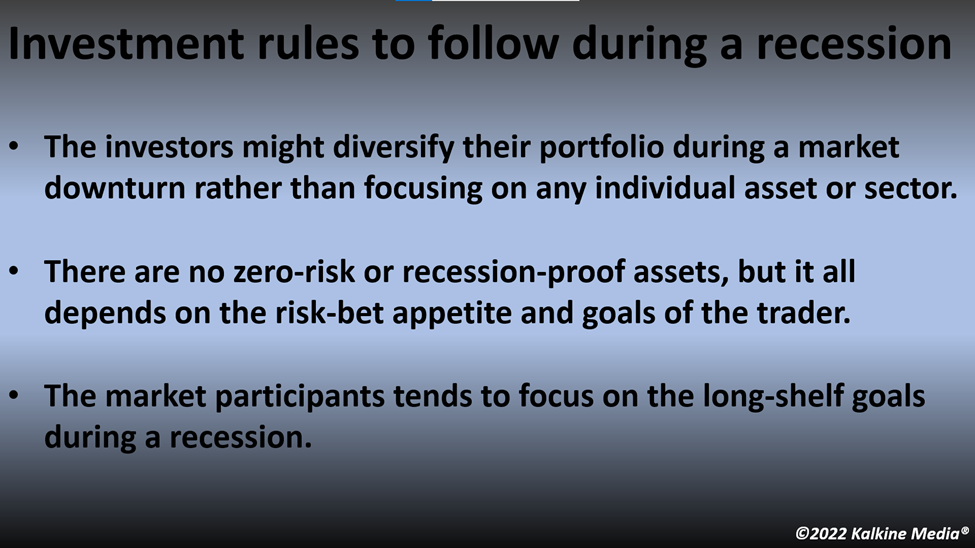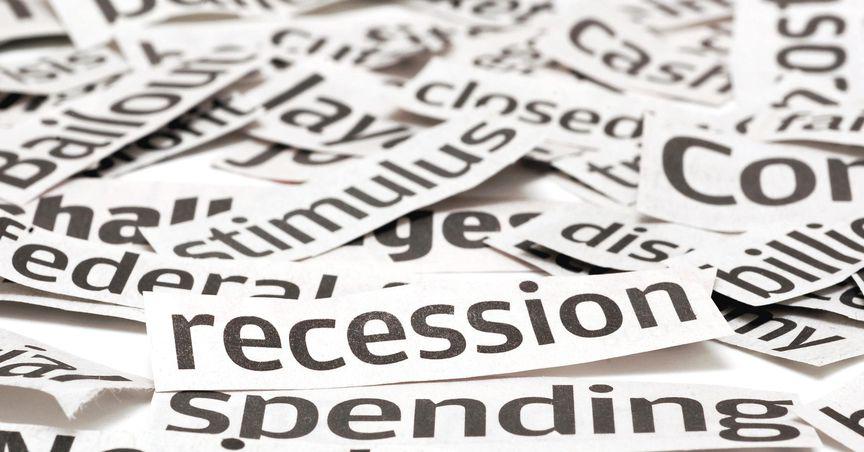Highlights:
- The recession could be considered a slowdown in economic activity.
- A decline in the GDP for two-consecutive months could indicate a recession.
- The prices of stocks tend to come down during an economic turmoil.
The soaring prices and the central bank's effort to cool down the demand have heightened worries of a potential recession. The investors seem to be panicking while looking for ways of a risk-free spending portfolio.
However, there is no such thing as risk-free, as certain risks are always associated with the stock market. Meanwhile, there may be ways that investors could follow to decrease the risk factors, although a zero-risk environment is nothing but a myth.
Now, what is a recession? Although there is no technical definition of a recession, the slowdown in economic growth could be regarded as a recessionary period. To be precise, the decline in the GDP for two straight quarters could confirm that an economy is in recession.
Now let's take a look at some of the investment strategies that the market participants may follow to assuage the risk factors amid increasing recessionary concerns:
Diversified Portfolio
Investors might diversify their portfolios amid a recession to lower the quantum of risks. A well-diversified portfolio could help traders in any given environment in the market.
The market participants might spread their spending into different assets from different sectors and from assets from different geographical locations. However, it also depends on the risk-bet appetite of the investors and on which sectors the investors are willing to invest in.
Buy the Dip Process
During a recession or an economic downturn, the prices of several big companies come down while opening opportunities for several investors. Investors willing to buy big companies' stocks generally have to wait for a stock split or buy a part of the stock through a trading platform.
So, these investors could explore opportunities in high-priced assets whose prices have decreased during a recession.
Focusing on long-term investments
Traders might aim for a long-run strategy amid recession concerns instead of short-term goals. Again, that all depends on the objectives and risk tolerance of the market participants.
Meanwhile, historically, the S&P 500 and Nasdaq, two of the biggest indices in the US, have regained their pre-recession momentum after a recession. However, the traders should also keep in mind that there is no definite rule that the historical or past performance guarantees any future market momentum.

Look for opportunities in precious metals
Several investors explore opportunities in precious metals during a recessionary period. Metals like gold and silver are generally considered safer havens during a recession as their performance is not directly dependent on the equity market.
In addition, the value of precious metals tends to go up amid a decline in the stock market, which could also make it attractive for investors during economic turmoil.
Exploring index funds
Investors might look for index funds during a recession. As said earlier, while there is no risk-free or recession-proof spending strategy, some options prove better than others. Generally, all types of investments carry certain risks, no matter what the current picture of the economic condition.
Now, what is an index fund? It is a kind of mutual fund or ETF comprising several assets, like the S&P 500. It helps the investors in gaining exposure to the broader market.
But spending on the index funds might prove to be beneficial, regardless of a recession or not. Investors are staking on the overall business condition through spending on index funds rather than a single asset or stock.
Bottom line:
The Federal Reserve had raised the interest rates by 75 basis points for the third time in September. In addition, the policymakers have signalled that they would back more aggressive rate hikes in the coming months to reduce the increasing costs.
Subsequently, they indicated that the central bank is committed to taming the inflation under their two per cent target. The central bank would continue to tighten the monetary policies until achieved, even if it triggers a recession.





